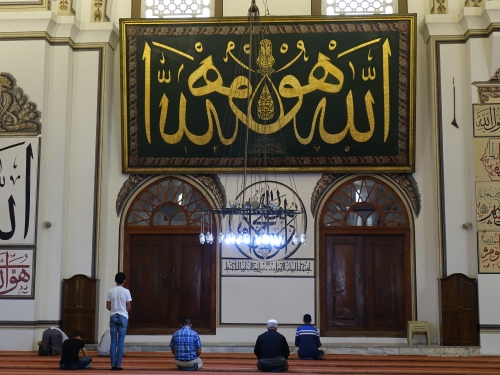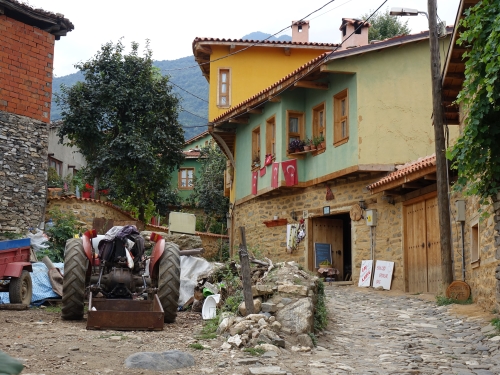Blog WHS Visits
WHS #679: Bursa
Together with Meteora, Bursa was the WHS I most looked forward to on my recent 2.5 week long trip through Bulgaria, Turkey and Greece. And it certainly did not disappoint. I spent 2 nights in this city that has a very positive vibe; I actually walked all over the place for a day and a half as its WH locations are so scattered. It also has an impressive live call to prayer from the ‘competing’ mosques to wake up with ánd there are great food stalls.

My hotel in Bursa was just inside the Citadel, the ancient part of the city where the Byzantines had their center. When the Ottomans conquered the city in 1339 and set up a new civil and religious center, they did so away from these old city walls. From the Citadel though you have a good view of the Grand Mosque with its 20 domes and 2 minarets.
That Grand Mosque was also my first goal in the city. It was crowded with domestic visitors – both tourists and worshippers. This mosque has a very special layout: in the center, under a kind of atrium covered with a glass dome, is a large fountain for ablutions. Around it there are niches to which believers can withdraw. Most striking feature of this mosque though are the large texts on its walls - 192 prayers and slogans have been done in calligraphy by 41 artists.
The mosque is part of the Orhan Ghazi Kulliye, a complex that included a religious school, community kitchen, bathhouse and commercial buildings. These last buildings have now been transformed into a bazaar - especially the former silk fair is an attractive building. Here, too, it is crowded with people enjoying the terraces for food and drinks.

The next morning I went to one of the other locations: the Yesil (Mehmed I) Kulliye. It lies on the other side of the river, a half an hour walk. This complex also consists of a number of buildings that belong together. The most important are the Green Mosque and the Green Tomb. The Tomb includes the mausoleum of Mehmed I, the 5th Ottoman sultan. It is not green, but blue with turquoise - very beautiful. Opposite the Tomb is the Green Mosque. This has some green tiles on its interior. It was built in a totally different style than the Grand Mosque where I went yesterday. It feels more intimate, almost Persian with the many tiles and the gold-with-blue elaborate muqarnas.
Towards the end of the morning I prepared for the trip to a third location: the village of Cumalikizik. It should be possible to get there on bus 22, but I could not find its departure point. The public transport app on my phone showed that you can also get there by metro, so I went for that option. The Bursa metro looks very new and is as efficient as you would expect from a metro. In about 20 minutes I arrived at the station of Cumalikizik. The village however is still half an hour walk away. Fortunately, all minibuses are passing by with that destination, so for 30 cents I got dropped off at the central square.
Cumalikizik is a farming village that stems from the same early beginnings of the Ottoman Empire as the monuments in Bursa. This village, together with many others that no longer exist in their original state, provided food to the city and its new rulers. It turned out to be super crowded in its narrow streets. Even a bus with Chinese tourists had managed to find the village. The only thing you can really do here is walk up one road, covered with treacherous uneven stones, and another one back again. The colourful, sometimes dilapidated houses are photogenic though.

A day or so after my visit I read a Turkish news article in which an official proclaimed that “Turkey has not enough WHS”. I was a bit sceptical about this act of patriotism at first – but looking at the ratings of the Turkish WHS on this website, I noticed that they have only 2 sites on 3 stars and nothing lower than that. At 3.5, Bursa ranks the 4th lowest among the 18 WHS. But it is a lovely off-the-beaten track destination to visit. So yes, there is room for more Turkish WHS!
Els - 29 September 2018